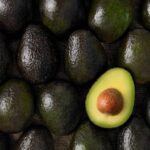ProHass: Further reductions likely for Peruvian avocado forecast

The total volume will still be higher than last season despite flood effects; some will just need to leave fruit on trees for longer.
Peruvian avocado association ProHass has formally downgraded its crop forecast for 2017, but organization president Daniel Bustamante wouldn't be surprised if rain effects pushed volume down further.
Bustamante tells Fresh Fruit Portal the official estimate has been cut by 10,000 metric tons (MT) to 240,000MT, and over the course of weekly updates that figure could easily fall by another 20,000MT.
"However, we continue to have a significant increase on the last year's volume of 180,000," he says.
In light of the gravity of the flooding situation and the high avocado prices currently seen in global markets, the reduction might appear understated.
But for Bustamante it reflects two important points - trees in flooded areas are young and haven't historically been a major part of the deal, and the reaction of many northern Peruvian growers has been to leave avocados on branches, wait for any potential fungal effects and act accordingly.
Unlike fruits that ripen through sugars, avocados mature through oil so growers have the luxury of leaving fruit on the tree until the time is right. Bustamante says while any moisture persists, producers can "endure" ("aguantar" in Spanish) the situation.
"Prior to the campaign we are restricted in terms of the products we can use in terms of residues, but there are still protocols and activities to combat fungal attacks," he says.
"Above all there’s been a prior work in the field to control the pest threshold, so the plant is stronger to resist threats.
"One of the measures or practices is to hold off the harvest for a few weeks so that the moisture effects go away from the rains, to see what happens with fungus, and know how to treat the fruit depending on which market you want to send it to."
The result has been a season delay, and Bustamante says the offering has had to be sourced from the earliest growing regions of the south and mountain areas; the latter typically starts earlier anyway.
"In the case of avocados there could be an effect in the volume from the [northern] zone or a fall the exportable volume from the zone due to more cosmetic damages to the fruit. However, the rest of Peru's growing regions haven't suffered from this," he says.
So what accounts for the high prices currently seen in global markets? One answer is growing demand, but from a supply side Mexico's lower crop is also exacerbating the shortage.
Avocado Producers and Exporting Packers Association of Mexico (APEAM) advisor Ramon Paz says his country's production is down 20%, while California's crop is 50% lower.
"In fact, that's the reason why Chile could export so much to the United States this season," Paz tells Fresh Fruit Portal.
"In the United States market we see Peru's entry has been delayed by a couple of weeks due to the floods, and that's increased the pressure on the United States [market]; California for its part should be in full harvest, but they have less production.
"And Mexico has this seasonality. The production that is harvested between April and June is produced in the higher zones where yields tend to be lower and there is less surface area planted," he says,
Paz clarifies that despite this situation there will be enough fruit to meet demand for the high consumption period around Cinco de Mayo celebrations.
"The fruit is already in the United States. There's around 40,000MT to supply that date, which is more or less the normal pace for this period of the year. The stores are doing promotions and fruit won't be lacking to meet demand on May 5," he says.
Back to Peruvian supply, Bustamante says higher year-on-year production will facilitate the industry's moves into new markets. Europe is set to be the top market, followed by the United States, and then Latin America will come in at number three.
After sending "very little" fruit to Chile last year, Bustamante says the southern neighbor is set to have more imports of Peruvian avocados in 2017 and will be the top destination. This will also be the first campaign with access to the Argentine market, while other destinations such as Central America and Canada will also be important to the exporter community.
The rest of the fruit is expected for export to Asia, mainly China, followed by Japan.
Related story: Peru's pain may be South Africa's gain this avocado season








































